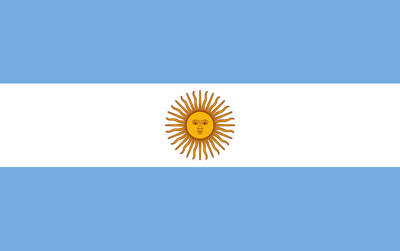Pakistan Local Cotton Market:
(The local cotton market saw an upward trend due to limited crop availability, while international markets faced mixed dynamics, with ICE cotton futures declining trend got the attention of buyers. Rising crude oil prices supported cotton futures, and a weaker US dollar boosted affordability for foreign buyers. Pakistan remained a key player in US cotton imports despite global production increases and declining exports)
1- Over the past week, the local cotton market experienced an upward trend driven by a shortage of the cotton crop and limited availability of high-quality cotton from ginners.
2- Ginners set their prices based on the quality of their stock, creating variability in the market.
3- Most of the buyers have shifted their focus toward importing cotton from other regions, as international prices have reached levels they find acceptable, encouraging purchasing activity.
4- ICE cotton futures lost in this week and settled in the red zone. Profit booking in soybean and relief from drought in Argentina dampened market sentiments in US cotton. Rains in Argentina in the coming week may relieve worries about cotton production.
5- However, rising crude oil prices capped losses in ICE cotton. The oil prices rose due to supply constraints from Russia and Iran amid Western sanctions and expectations of rising demand from China. Higher crude oil prices increased the cost of production in the polyester value chain, a man-made alternative to cotton, thereby increasing the appeal of cotton futures.
6- The US dollar weakened significantly, dropping 1.07 per cent against a basket of currencies. This makes cotton purchases more affordable for foreign buyers.
7- In the United States’ weekly cotton sales report, Pakistan remained the second-largest buyer of American cotton this week. Meanwhile, the global monthly cotton report highlighted an increase in production, a decline in exports, and a rise in ending stocks. This led to a significant downturn in the international cotton market.
8- Last week, cotton prices in Punjab and Sindh were up rs. 1,000 aprox and traded in range of 17800 to Rs 20,000 per maund, (USC 78~ 87 lbs). In Sindh, cotton rate was Rs 17,800 to Rs 19,000 per maund, while in Punjab it ranged from Rs 17,900 to Rs 20,000 per maund based on quality. KCA up Rs. 500 to at 18,500 Rs per maund, PSF was same at Rs. 357 PKR/kg.
Local Yarn Market:
(This week the local yarn market exhibited a firming trend driven by rising cotton prices. While demand for certain counts increased, challenges remain, including cash flow constraints and inventory management. The overall outlook remains cautiously optimistic, with stable PSF prices and anticipated continued demand for certain yarn type)
1- The local yarn market exhibited a firm trend with increased yarn prices driven by rising local cotton costs
2- The new year presents operational challenges for suppliers, including managing inventory levels and navigating cash flow constraints
3- PSF prices remained stable this week and are expected to continue stable by next week.
4- The Faisalabad yarn market experienced increased demand for fine cotton counts, particularly 60/1 CM, driven by seasonal fabric production.
| Count | Price in Pak Rupees / 10 LBS | Price US$/Bale |
| 16/1 Carded Weaving | 3200 – 3300 | 460 – 475 |
| 20/1 Carded Weaving | 3320 – 3425 | 480 – 495 |
| 30/1 Carded Weaving | 3650 – 3800 | 525 – 550 |
| 20/1 Combed Weaving | 3800 – 3925 | 550 – 565 |
| 30/1 PC Carded Weaving 52:48 | 3050 – 3200 | 440 – 460 |
| 40/1 Combed Compact Weaving | 4350 – 4450 | 625 – 640 |
| 60/1 Combed Compact Weaving | 5900 – 6150 | 850 – 885 |
| 80/1 Combed Compact Weaving | 8000 – 8200 | 1155 – 1180 |
| 40/1 CVC Carded Weaving 60:40 | 3800 – 3950 | 550 – 570 |
Export Yarn Market:
(The export yarn market remained at a slow business pace. Customers from all regions kept on floating their requirements, and limited deals were closed as well)
1- The Export yarn market remained firm and stable with limited business activity
2- The customer floated a good number of inquiries, and there are good projects under discussion.
3- Suppliers remained firm in asking their prices due to the sudden increase in cotton prices in the domestic market.
4- The Pakistani rupee against the USD is showing stable sentiment, which is another reason for unchanged yarn prices for the export market.
5- Pakistan’s cotton crop is finished, and cotton prices in the domestic market will remain stable with a tendency to increase due to limited stock availability.
6- Chinese buyers kept on buying cautiously due to the weak RMB against the USD. It is expected that customers will indulge themselves in buying before CNY, which will give handsome support to the market.
7- European buyers are back from holidays, and very good numbers of enquiries were floated in the market. We might see handsome buying from China before CNY holidays.
| Export Yarn Prices | ||||||||||||||||
|
Local Fabric Market:
(The local fabric market remained slow with limited trading activity. Looking ahead, a slow trend is expected to prevail for both narrow and wider-width looms, with slight fluctuations in price trends)
1- The local fabric market experienced a slow trend with limited trading activity for both narrow and wider-width fabrics.
2- Local buyers remained sidelined due to their participation in the Heimtex fair, resulting in a week that closed with slow sentiments. Despite this, buyers are submitting low bids, which are 4% to 5% lower than the received offers.
3- Local brands are currently focused on their summer collections and have only shared their urgent requirements.
4- Air jet loom weavers have secured coverage for their narrow-width looms until the third week of February, while their wider-width looms are booked until early March 2025, with onward deliveries being offered.
5 Looking ahead, a slow trend is expected to prevail for both narrow and wider-width looms, with slight fluctuations in price trends.
Export Fabric Market:
(The export fabric market was slow during the week. The asking prices were increased by 2% due to an increase in raw material; however, customers have booked some orders at previous prices. Suppliers are hopeful for better business after the Heimtex fair held in Germany from 14th to 17th Jan)
1- The export fabric market has slow business sentiment during the week.
2- A limited number of inquiries were exchanged from Far Eastern markets, resulting in limited buying at previous prices.
3- The asking prices were raised about 2% by the suppliers due to the increase of raw material prices; however, customers did not accept this increase and booked some orders at previous prices.
4- Currently, supplies are booked till mid-February, and offerings are end-February onward deliveries.
5- The European and USA buyers have exchanged good number of inquiries, mainly for the price checking prior to Heimtex mega textile event in Germany.
6- Most of the customers were preparing their collections for the Heimtex fair and hopefully will start buying after the fair.
7- Wider-width suppliers are in a comfortable sales position and offering end-March/mid-April onward deliveries.
| Local and Export Fabric Prices
| ||||||||||||
|
Bed Linen and Towel:
(Heimtextil approaches with high expectations, but the industry’s ability to balance innovation, sharp pricing, and rising production costs remains a critical challenge—stay tuned for next week’s updates)
1- Heimtex is round the corner, and all eyes are on this. Suppliers are geared up to offer the latest developments and product innovations. A considerable amount of effort and resources are spent by 90% of the industry in this regard.
2- Having said that, very sharp price points, unrealistic European targets, and, on the other hand, rising costs of production are still the biggest challenges for the industry.
3- How the HT industry will cope with it, let’s see the next week’s updates.
Garments:
(Overall, garment factories are operating at seventy to eighty percent of their production capacities and striving to grab more orders to fulfill their empty space. For that, factories are also ready to squeeze their margins to clinch the orders. Some brands are also working on FW25/SS26 developments, which show a healthy sign for future order with specific quantities)
1- The Pakistani apparel industry is suffering unequal commercial activity, with manufacturers not obtaining enough orders to meet their manufacturing capacity.
2- Because of inflation, some retailers and brands have reduced their purchasing.
3- Large retailers typically placed orders based on projections, but market sentiment has slowed in the fourth quarter of 2024 due to global inflation. However, we are expecting enough orders in the 1st quarter of 2025.
4- Factories plan to supply onwards orders by mid-April 2025.
5- Sustainability is vital in the apparel industry to reduce environmental impact and improve working conditions.
6- The global denim market is struggling with inflation, but manufacturers remain optimistic about the forthcoming seasons as consumers continue to have a strong demand.
Crude Oil:
1- Crude Oil prices opened at USD 73.56 with lower level as compared to last week closing figures. in this week, crude oil prices showed an upward trend and closed on higher side by the end of week.
2- In last day of the week, Crude Oil price closed at USD 76.57 with an increase of 3.01 USD cents as of the opening figure of week.
| Opening of Week | Closing Of Week | Change | |
| Price | 73.56 | 76.57 | 3.01 |
Exchange Rate:
1- In the last week, the value of the Pakistani rupee depreciated against the US dollar; other major currencies showed mixed trends in both interbank and open markets.
2-At the end of the week, the euro closed on a negative note with a figure of 1.02, and the British pound closed on a negative note with a figure
of 1.22 against the USD.
| Selling | Buying | |
| LC Sight | 277.55 | 277.50 |
| LC 120 Days | 268.42 | 268.37 |
| Open Market | 281.08 | 276.21 |
New York Cotton Future:
The New York Cotton Futures (NYCF) opened the week higher than the previous week’s close, showing a downward trend throughout and closed on lower note at the end of the week.
1- March 2025 ended at 67.01, down by 167 points compared to the previous week.
2- May 2025 Finished at 68.26, reflecting a decrease of 156 points from the previous week.
3- July 2025 Closed at 69.37, a drop of 148 points from the previous week.
4- October 2025 Closed at 68.44, marking a drop of 96 points from the previous week.
Liver Pool Indices:
1- Liverpool Index A was opened at 79.05 on a higher level from the previous week of the closing figure.
2- In this week’s index, “A” showed a mixed trend and closed on the lower side by the end of the week.
3- On the last day of the week, LPI “A” closed at 78.95 with a decrease of 10 points.
| Opening of the Week | Closing of the Week | Change | |
| Index A | 79.05 | 78.95 | -0.10 |







